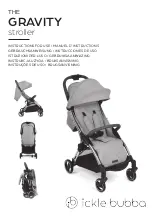
Dok‑Commander
®
Installation/Service/Owner's Manual
Rite‑Hite
®
6 Publication:
AMEN00070 2020-01-30
INSTALLATION
DANGER
When working with electrical or electronic
controls, make sure that power source
has been locked out and tagged according
to approved local electrical codes.
Post safety warnings and barricade work area,
at dock level and at ground level, to prevent
unauthorized use of dock position.
A qualified electrician should install wiring in
accordance with local electrical codes.
NOTICE
Mounting surfaces vary Use mounting hardware
(supplied by others) with necessary strength for
secure attachment of assembly to door frame or
inside face of building wall
NOTICE
The safest location for conduit is at the bottom of the
control box Failure to install conduit at the bottom of
the control box may void the warranty
Be extremely careful when drilling conduit holes into
control box Drilling too deeply or allowing debris to
fall into electrical components may cause severe
equipment damage or component failure
DO NOT
turn control box upside down when drilling
holes Holes on top of control box may allow dust
and moisture to enter control box
If rigid conduit is installed, bonding must be
maintained between conduit connections by using
ground bushings and a jumper wire
All field wiring to be minimum 60°/75°C copper wire,
insulated sufficiently for highest voltage that will be
encountered
NOTE:
Cover screw torque is 10in-lbs [113 Nm] for all
applications
Standard Applications
1 Install the control box on a wall adjacent to the
overhead door at approximately 48in – 50in
[1219mm – 1270mm] above the floor level Make sure
to mount where control box is clear of obstructions
2 Drill a hole for the power supply conduit (supplied
by others) in the bottom of the control box All holes
drilled through the control box must be through the
bottom of the box to maintain NEMA4X rating
Temperature Controlled Applications
In addition to the standard application instructions follow
these guidelines:
•
If conduit could fill with water, install a drip leg
(supplied by others)
• Seal the conduit in any location where the conduit
transitions temperature zones that may produce
condensation
• Install spacers (supplied by others) between the
enclosure and the wall to provide temperature insulation
and air flow.







































